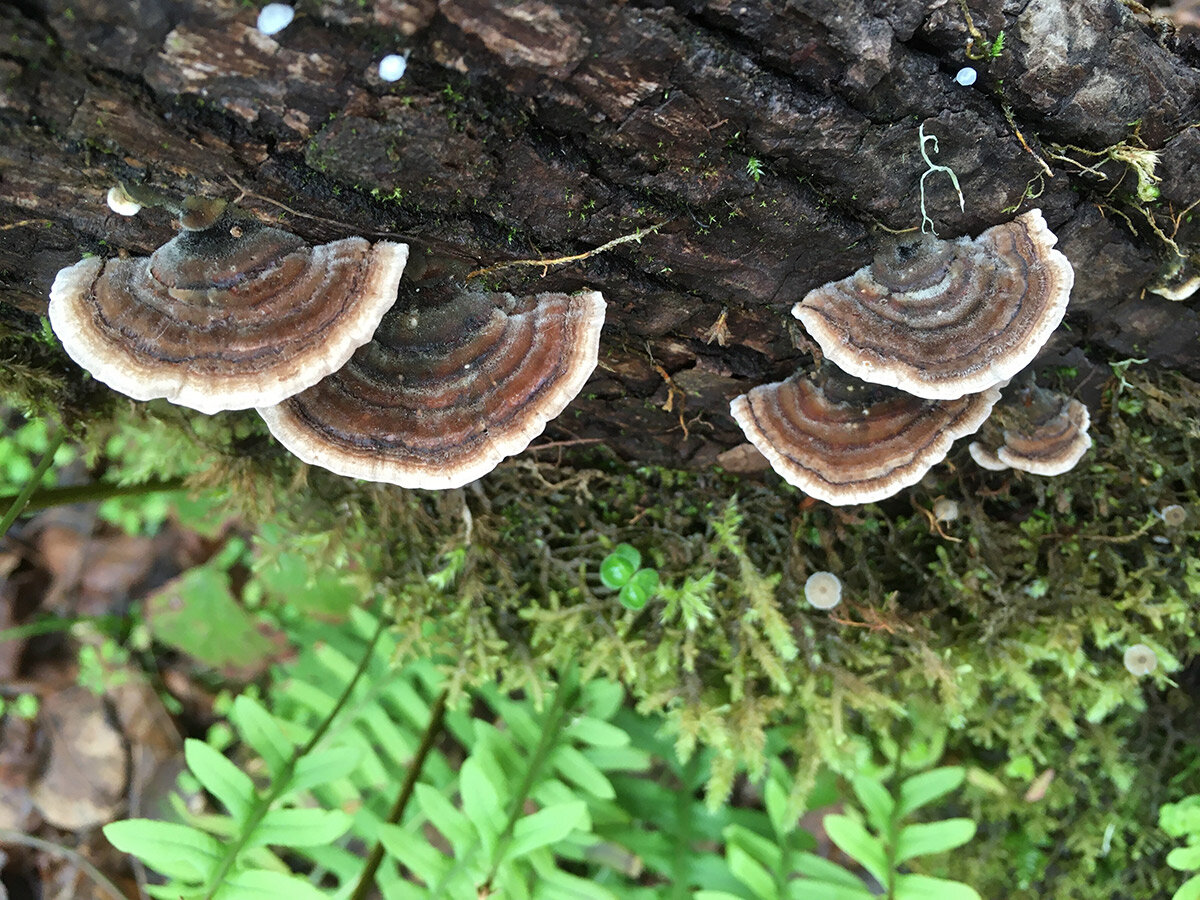When this organism first caught my eye, I thought it was a moth. Realizing it wasn’t a moth, I went in for a closer look. I was so struck by the beautiful bands of brown and the velvety texture. Elegantly nestled in the moss, it was attached directly, without a stem, to a decaying log. I lightly touched it, still imagining it would fly away. I looked it up when I got home and found that it was possibly a turkey tail fungus. I went back today to look underneath to see if it had pores, which it does. I found one on the ground, that had probably been broken off, and I was able to bend it. Flexibility is one of the traits of turkey tail fungus. Turkey tails also have a velvety texture on top, which I reaffirmed today. I’m so glad that these magnificent, little creatures are apart of my awareness now.
Bird's Nest Fungus
The fruiting body of the bird’s nest fungus forms a small cup that reminds me of the remains of an old barnacle shell. I see them perched on small twigs on the forest floor along the Incense-cedar trail. When these cups form, they contain spore sacks, known as peridioles, which resemble tiny eggs. Raindrops fall into the cups and splash the small sacks out into the surrounding area spreading the fungus. I’m uncertain as to when these formed, and I wonder if the small, light brown formations around the cups are associated with the fungus. Maybe these fruits popped out with the first rains at the end of summer. I’ll try to check in on them throughout the fall to see what happens.
This creature is pretty small. It’s about the size of the cap that goes on a bicycle tire,. They are not too tricky to spot if I take a minute to carefully scan beside the trail.



